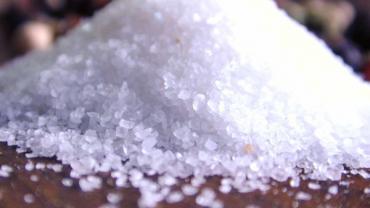
Along with cholesterol and saturated fat sodium is a third nutrient that has come under fire—perhaps erroneously—over the last several decades. Saturated fat is being vindicated albeit slowly and according to the Scientific Report of the 2015 Dietary Guidelines Advisory Committee “Cholesterol is not a nutrient of concern for overconsumption.” Sodium however is still the whipping boy of the conventional nutrition and medical establishment. Is it possible we’ve gotten things wrong about this essential nutrient the way we did with “artery-clogging saturated fat?”
The importance of sodium (as sodium chloride) is demonstrated by animals gathering around natural salt deposits or salt licks and by traditional populations placing a high value on salt. Such a high value that it is now embedded in our everyday vernacular: it’s a compliment to say someone is a “salt of the earth” person or is “worth her salt.” The word “salary” is derived from salt where ancient Roman troops were sometimes paid in salt because it was that prized.
The demonization of salt comes mostly from the epidemic of hypertension. However only a small percentage of the population is “sodium sensitive” with regard to blood pressure; far more people have hypertension as a result of elevated insulin. The well-known DASH diet (dietary approaches to stop hypertension) is low in sodium and high in potassium-rich vegetables and fruit. But this isn’t the only dietary strategy effective for reducing elevated blood pressure. Low-carbohydrate diets typically have a favorable impact on hypertension owing partly to their diuretic effect largely driven by the way the dramatic reduction in insulin levels influences the way the kidneys retain and dispose of minerals.
Sodium as mentioned above is an essential nutrient. This doesn’t mean there’s no such thing as “too much” though. Just because we need some doesn’t mean we should go out of our way to gorge on it—as can be said for any nutrient. But it does mean there’s such a thing as too little. Granted most people in the modern industrialized world don’t need to worry about getting too little sodium but if it wasn’t a problem among at least among some people a cardiovascular researcher wouldn’t have written a book called The Salt Fix: Why the Experts Got It All Wrong--and How Eating More Might Save Your Life.
It’s no wonder people are confused though. When newspapers publish a headline about “high salt warnings” on restaurant menus followed five months later by one that says “A Low-Salt Diet May Be Bad for the Heart” well what are they supposed to believe?
For most people the majority of sodium comes from processed foods—foods that contain salt as a preservative or flavor enhancer. Think boxed bottled and canned foods as well as fast foods and certain foods eaten in restaurants. But not everyone lives on a steady diet of supermarket center aisle fare and drive-thru cuisine. Doctors and nutritionists whose clientele is more savvy regarding “real food” and who cook most of their own food from whole unprocessed ingredients might encounter people who could benefit from more sodium in their diet.
Individuals who consume meat seafood poultry vegetables fruits nuts seeds and legumes may be getting far less sodium than is optimal. (As researchers from the Linus Pauling Institute wrote “Very little sodium occurs naturally in food.”) People on very low carbohydrate and ketogenic diets are advised to add salt to their food to counteract the strong diuretic and mineral wasting effect these approaches may have. (Some of the unpleasant symptoms people experience on a very low carb diet especially during the initial transition away from a habitually high carb intake—such as fatigue headaches dizziness and nausea—are the result of insufficient electrolytes sodium most importantly.) Such advice is even more important for individuals who perform a lot of exercise or physical activity in general and who sweat a lot. The sodium needs to be replaced along with other electrolytes. (Potassium and magnesium in particular.) Perhaps those who follow Paleo diets and do a lot of intense exercise are following an innate biological drive for sodium when they revel in bacon!
So what does sodium do anyway? Obviously it helps to regulate extracellular fluid volume. As part of the sodium-potassium ATP pumps it’s crucial for maintaining a proper electrochemical gradient across cell membranes and “tight control of cell membrane potential is critical for nerve impulse transmission muscle contraction and cardiac function.” (In other words just about everything.) And let’s not forget about the sodium-iodide symporter. Sodium is required for iodine uptake by the thyroid gland and certain other tissues. There are also sodium-dependent vitamin C co-transporters (SVCT2) in various tissues including the brain. “The brain depends on the SVCT2 receptor to govern active VitC transport across the choroid plexus to the brain extracellular fluid and further on to neuronal cells.” Is it possible that low sodium diets—recommended seemingly for everyone but for the elderly in particular—could be affecting vitamin C content in the brain thus contributing to a decline in cognitive function?
Sodium—like all other nutrients—is needed in a “Goldilocks” amount: not too much and not too little. What this amount is exactly will vary among individuals depending on habitual diet exercise habits and other factors. But for patients consuming largely whole foods diets—whether mostly plants or omnivorous—if they present with fatigue malaise headaches and muscle weakness not attributable to anything else consider recommending increased salt intake.